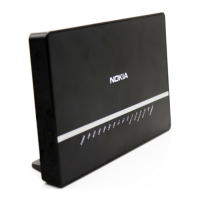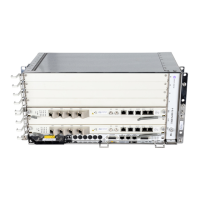Virtual Private LAN Service
224
FD 100/320Gbps NT and FX NT IHub Services Guide
3HH-11985-AAAA-TQZZA Issue: 13
Each of the FEC fields are designed as a sub-TLV equipped with its own type and
length providing support for new applications. To accommodate the BGP AD
information model the following FEC formats are used:
• AGI (type 1) is identical in format and content with the BGP extended community
attribute used to carry the VPLS-ID value.
• Source All (type 1) is a 4 bytes value destined to carry the local VSI-ID (outgoing
NLRI minus the RD).
• Target All (type 1) is a 4 bytes value destined to carry the remote VSI-ID (incoming
NLRI minus the RD).
5.10.3 BGP-AD and Target LDP (T-LDP) Interaction
BGP is responsible for discovering the location of VSIs that share the same VPLS
membership. LDP protocol is responsible for setting up the pseudowire infrastructure
between the related VSIs by exchanging service specific labels between them.
Once the local VPLS information is provisioned in the local PE, the related PEs
participating in the same VPLS are identified through BGP AD exchanges. A list of
far end PEs is generated and will trigger the creation, if required, of the necessary
T-LDP sessions to these PEs and the exchange of the service specific VPN labels.
The steps for the BGP AD discovery process and LDP session establishment and
label exchange are shown in Figure 28.
AII Type Length Value
SAII Value (continued)
AII Type Length Value
TAII Value (continued)
(2 of 2)

